- Home
- Graham Hancock
The Master Game Page 4
The Master Game Read online
Page 4
And there is yet more to feast our eyes upon. Today an imposing glass Pyramid – commissioned by President Mitterrand for the bicentennial celebration of 1989 – looms like a giant diamond in the central courtyard of the Louvre. This out-of-place pyramid seems to define for us an open vista westward leading through Napoleon's Arc du Carrousel and towards the impeccably-groomed Tuileries Garden. Our line of sight further takes in the wide and perfectly straight Avenue des Champs-Élysées, the backbone of Paris that was once known as the Axe historique – the ‘Historical Axis’. At this point it is impossible not to see the tall Egyptian obelisk that rears up towards the sky in the Place de la Concorde at the entrance of the Champs-Élysées. And nor can we ignore the way in which the whole layout that we observe from the high vantage point of the Génie de Paris bears an uncanny and striking similarity to the layout and general scheme suggested in Picot's painting. For if we examine this painting more closely and try to imagine ourselves now alongside the other winged Génie de Paris which hovers over the mysterious Egyptianised landscape of Picot's masterpiece, something immediately becomes clear. The obelisk and the various pyramids that Picot included not only seem to define the central axis of the painting but, if transposed to the layout of Paris, will correlate with the Concorde Obelisk and the Louvre Pyramid that define the central or ‘Historical’ Axis of the city!
Charles X’s decision to send Champollion to Egypt to bring back the obelisk was taken during the year 1826 – 7 while Picot was in the process of painting his masterpiece at the Louvre. We also know that Picot was deeply involved in the furbishing of Charles X’s Egyptian museum at the Louvre Palace and that he would almost certainly have been privy to the discussions surrounding the importation and positioning of the obelisk. Even though it was not until 1836 that it was finally raised up in the Place de la Concorde, therefore, its easy to understand why the artist might have been inspired to put an obelisk in his 1827 painting – and in the right place.
Much harder to explain is the relationship between the pyramids Picot shows in the painting and the Louvre Pyramid visible in our aerial view. This is because the latter is a modern work, less than 20 years old at time of writing, designed by architect I. M. Pei and completed in 1984.
So the question is, how could Picot have anticipated I. M. Pei's pyramid? Or – more conspiratorially – did the 1827 painting allude to some sort of occult plan or blueprint for Paris that has continued to be implemented over more than 150 years? Or is it just a huge coincidence that the Egyptianised landscape being unveiled in the painting has been reproduced in the architecture of Paris?
Was Freemasonry behind the French Revolution?
We have already seen how during the 1789 Revolution it was proposed to raise a pyramid at the site of the Bastille – something that Picot would certainly have known of. Picot is also likely to have been aware of a number of other grandiose ‘pyramid’ projects that were planned before and after the Revolution but that had been stalled because of shortage of funds.
There had been, for example, a massive ‘pyramid tomb’ planned in Paris in honour of the scientist Sir Isaac Newton who was a hero of the Enlightenment and, consequently, of revolutionary ideals. The ‘pyramid’ was designed by the French architect, Joseph-Jean-Pascal Gay, in 1800, and was to have had a great perimeter wall with four gates modelled on the Temple of Karnak in Upper Egypt, and an alley of 18 sphinxes leading to the ‘pyramid’.14
There were too, the various pyramids proposed by the architect Étienne-Louis Boullée. One of his surviving sketches is of a group of pyramids closely resembling the pyramids in Picot's painting – where they are seen enveloped in clouds and haze with their capstones missing.15 The historian Jean Starobinski in his study of the emblems and symbols of the 1789 Revolution, explains that the ‘language of the Revolution’ was intensely ‘symbolic’. Starobinski also speaks of a mood that seems to have seized architects in the immediately pre-revolutionary period: a novel need to use basic geometrical shapes – cubes, spheres, pyramids – on a monumental scale and to transform Paris into some sort of ‘utopian city’: … [there was a] need to add images to ideas, and to design the plans of an ideal city. This city, like all other utopic cities, would be governed by the laws of a simple and strict geometry … All these grand architectural styles in line with simple principles of geometry presented as projects remained unrealised. [And although] a harmonious city, a city for a new age … existed in the portfolios of certain architects, well-before the storming of the Bastille … the Revolution would have neither the time, nor the resources, nor perhaps the audacity to ask them to undertake these great civic projects …16
But why an Egyptianised utopian vision for Paris? Why pyramids and pseudo-Egyptian landscapes? Where did such strange ideas come from? And who was promoting them?
Such obsessions with symbolism, architecture and particularly geometry once again suggest the influence of Freemasonry. Yet the authorities are divided on the matter. Scores of historians argue that an important role was indeed played by Freemasons in the French Revolution while, on the other hand, equal numbers argue that Freemasonry had nothing or little to do with it. This state of affairs is adequately expressed by the French historian Jacques Godechot, an expert on the subject: There is a whole genre of literature, with shows no sign of abating, which attributes the responsibility of the Revolution, and especially the days of 1789, to the Duc d’Orléans [the first Grand Master of the Grand Orient, the supreme body which regulates Freemasonry in France]. According to this literature, it was the Duc d’Orléans who was responsible for the riots of the Réveillon, those of the 14th July, those of the night of the 4th August, and those of the days of October. The Duc certainly attempted to profit from these events but whether he was the cause of them seems highly doubtful. In any case, if he did play this game, his efforts constituted a small influence compared to the much larger forces that pushed the people, France and even all of the Western world towards Revolution …17
The truth is that no historian, however thorough his or her research, can really know what ‘forces’, visible or occult, moved the French people to erupt in total revolution against the monarchy and the Church in 1789. By definition such ‘forces’ are impossible to gauge and sometimes may not be ‘visible’ or ‘documented’ at all. It is a similar problem attempting to catalogue the forces behind the Crusades in the Middle Ages or behind the Holocaust in Nazi Germany – or indeed those ‘forces’ that launched the United States on its ‘War on Terror’ at the beginning of the 21st century. No single force, occult or otherwise, can be deemed solely responsible for any of these events; rather a combination of forces has in every instance been at play.
In the case of the French Revolution, it is clear that one of the main forces was generated by the terrible oppression of the people and the abuse of power by the monarchy. Yet no historian will deny that there was also a strong philosophical and/or intellectual undercurrent to the Revolution which exerted a powerful influence on the behaviour of key figures such as Maximillien Robespierre, Jean-Paul Marat and George Jacques Danton, as well as others such as the painter Jacques-Louis David and the sculptor Jean-Antoine Houdon. At this stage of our investigation Freemasonry remains as good a candidate as any for the source of this undercurrent.
Meanwhile, across the Atlantic in America, another ‘sister’ Revolution had taken place a decade earlier. There, too, a strong philosophical/ intellectual undercurrent can easily be detected which moved the main players such as Benjamin Franklin, Thomas Jefferson, Thomas Paine and George Washington. And there, too, a utopian city was, quite literally, in the making – to an esoteric plan far less veiled than that of Paris.
Franklin, Freemasonry and Revolution
That the American Revolution or War of Independence was much influenced by Freemasons and Masonic ideologies and principles is a wellaccepted thesis. There are several good works on this topic18 that leave little doubt that Freemasonry was one of the driving forces behind
the ideals and tenets, and the attachment to republicanism, of the American Revolution. What is less well known is the fact that there was a very close connection between the French and American Masonic lodges at that time.
It is not clear whether or not Freemasonry might have entered North America before the establishment of the Grand Lodge of England in 1717, but the earliest surviving records of formal Masonic lodges in America are from Boston and Philadelphia in the early 1730s.19 The spread of Freemasonry in America occurred through the so-called military lodges, and by the eve of the War of Independence in 1775 it had become extremely popular among the ranking officers and gentry.
One of the first American Freemasons was Benjamin Franklin, who was initiated in February 1731 and became Master of the St. John's lodge in the city of Philadelphia, where he ‘produced the oldest draft of American lodge by-laws still in existence’.20 Franklin, who had founded the Pennsylvania Gazette in 1729, is also renowned in Masonic circles for printing (in December 1730) the very first article in America which referred to Freemasonry.21
In those days Freemasonry in America was regulated by the Grand Lodge of England which appointed ‘Provincial Grand Masters’ in various regions of the North American continent. In 1749 Franklin was appointed Provincial Grand Master of Pennsylvania. An intellectual, a brilliant politician and, above all, a cunning agent provocateur, Franklin was to become the key figure in the American revolt against Britain and, of course, the most renowned ‘Founding Father’ of the United States.
Both as a young man and later in his adult life, Franklin passed three sojourns in England – a total of 15 years accumulated between 1724 and 1726, 1757 and 1762, and 1765 and 1775. During these lengthy stays no one disputes that he gravitated in his choice of friendships towards influential Freemasons and radical intellectuals. On his return visits to America he became notorious for stirring up dissent against British colonial rule – so much so that the Privy Council of London found it necessary to summon him and severely warn him not to rouse anti-British sentiment in the colonies.
It was Franklin who, while in England, had encouraged rejection of the Stamp Act imposed by the British on the American colonies (which required settlers to pay a tax to certify all legal documents and transactions). Franklin managed to intercept a series of letters written by Thomas Hutchinson, the British governor of Massachusetts, in which several important American political figures were spoken of in very hostile terms. Franklin dispatched copies of these letters to friends in America who had them published, causing such an outrage that the British had to appease the situation by repealing the act.
By the spring of 1775 the pressure was mounting against Franklin in England, and he decided it was time to return to America. He arrived there on 5 May. While he had been at sea, war had broken out between the British and the American revolutionary forces at Lexington and Concord on 19 April 1775.
On his arrival in Pennsylvania, Franklin was immediately appointed as a delegate to the Second Continental Congress, the body that was soon to become the Congress of the United States of America. Other newly appointed members were Thomas Jefferson and George Washington. Among the first decisions that the Congress made (on 15 June 1775) was the appointment of Washington as commander-in-chief of the revolutionary armed forces.
Washington was 43 years old in 1775 and Franklin 69. Like Franklin, Washington was a Freemason. He had been initiated into the brotherhood in 1752 at Fredericksburg, Virginia, and had been raised a Master Mason the following year.22 John Hancock, a rich Harvard gentleman, was president of the Congress at the time. He, too, was a prominent Freemason, later to be remembered for his large signature on the Declaration of Independence.
In September 1776 the Congress agreed to send a commission to France in order to seek military and financial support for the war against Britain. Franklin was a member of the three-man commission. He arrived in Paris just before Christmas that year. Although France was not at war with England at the time, it was regarded as its natural enemy and, therefore, sympathetic to the American cause.
Franklin immediately struck up friendships with important figures in French society and, particularly, among the elite and the Freemasons. To the French he personified the unsophisticated nobility of the New World, and he quickly became the darling of French society and the hero of the intellectuals and military gentry. A sort of ‘Franklin cult’ was to emerge, and his portrait was seen everywhere, from snuffboxes to chamber pots. His company was in great demand by artists, intellectuals and high-society ladies. Spies and informers infested his house.
Franklin was to engage in secret negotiations with the Count of Vergennes, Louis XVI’s minister for foreign affairs. These negotiations lasted several years, and eventually treaties were signed in 1778 in which France pledged military and economic support to the revolutionary cause in America.
Meanwhile in Paris Franklin pursued his social and intellectual interests with gusto by joining the illustrious Masonic ‘Nine Sisters’ lodge.23 This famous lodge was founded in 1776 by Jérôme Lalande and the Abbé Cordier de Saint-Fermin, the latter the godfather of Voltaire. This was the same year that the Declaration of Independence was signed in America, with Franklin being the most senior of the signatories. Lalande was France's most respected astronomer, and wielded much influence amongst Parisian intellectuals.
Nine Sisters lodge
The Loge Les Neuf Sœurs, the ‘Lodge of the Nine Sisters’, named after the nine muses of Greek mythology, was in fact the successor of an older lodge, Les Sciences, which Lalande had founded in 1766 with the philosopher and mathematician Claude Adrien Helvétius. Helvétius was a staunch advocate of absolute atheism whose political and philosophical ideas would much influence the 1789 Revolution. After the death of Helvétius in 1771, his wife, Anne Catherine Helvétius, joined forces with Lalande and Saint-Fermin in the creation of the Nine Sisters lodge. Her own elite salon in the Rue Sainte-Anne in Paris was famous throughout Europe, and was dubbed ‘the general headquarters of European philosophy’.24 Another of her salons in Auteuil near Paris maintained very close links with the Nine Sisters lodge.25
Not surprisingly, Franklin was a regular visitor to Mme Helvétius's salon. Another was the Marquis de Lafayette, a young officer in the French army. Lafayette belonged to a Masonic lodge, Le Contrat Social, which was linked to other important lodges throughout France. Notable amongst these was the lodge La Société Olympique, with its membership of young officers such as the Count de Chambrun, the Count-Admiral François Joseph Paul de Grasse, the Count-Admiral Charles Hector d’Estaing and the buccaneer John Paul Jones – all of whom would fight for the American cause a few years later.26
In 1777 Franklin became the ‘Venerable Master’ of the Nine Sisters lodge and in 1778 he was given the ultimate honour of assisting in the initiation of the 84-year-old Voltaire. It is said that the aging Voltaire was supported on the arms of Franklin and Antoine Court de Gébelin, the Swiss-French inventor of the modern esoteric Tarot.27
In April 1777 Franklin's agent in Paris, the diplomat Sileas Deane, succeeded in recruiting the young Marquis de Lafayette, then only 19 years old, and dispatching him to America to serve under Washington.28
All in all therefore there is ample evidence of Masonic activity – in France – focussed on the care and nurture of the American Revolution and centred around Franklin and the Nine Sisters lodge. Such evidence is suggestive but does not permit us to deduce that the Nine Sisters lodge and/ or Freemasonry in general were also responsible for the violent eruptions in Paris on 14 July 1789 with the storming of the Bastille and the total revolution that followed.
Still, the suspicion lingers. As the French historian Bernard Fay explains: The revolutionary impulse, the revolutionary funds, the revolutionary leaders, during the first two years of the Revolution, came from the privileged classes. If the Duc d’Orléans, Mirabeau, Lafayette; if the Noailles family, the La Rochefoucauld, the Bouillon, the Lameth and other liberal nobles had not des
erted the nobility in order to join the cause of the people and the Revolution, the revolutionaries would have been deprived of this advantage which allowed them to triumph from the outset. Now, all these nobles who rallied in haste to the cause of new ideas, although at the end they lost their fortunes, their situation, their ranks, and their lives, were Freemasons and we cannot attribute this to hazard, unless we ignore the evidence.29
Not surprisingly, Bernard Fay also sees the Nine Sisters lodge as being the focus of the activities that marked the early years of the French Revolution. This lodge, as we know, harboured not only several key players in both the French Revolution and the ‘sister’ American Revolution, but also writers, intellectuals, politicians and artists who used their talents to extol the virtues of the Republic. ‘It is certain’, writes Masonic historian Jean-André Faucher, that: … the Freemasons [of the Nine Sisters lodge and other lodges] who contributed to the collapse of the monarchy and to the success of the Revolution were in great numbers.30
Another alleged member of the Nine Sisters lodge was the brilliant trained orator, lawyer and self-made politician George Jacques Danton. He is credited by many scholars with the pivotal role in toppling the French monarchy and in the creation of the First Republic in September 1792. He was also the founder of the infamous Club des Cordeliers, an ultra-radical revolutionary society officially known as the Society of the Friends of the Rights of Man and of the Citizen.

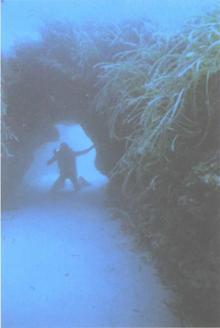 Underworld: The Mysterious Origins of Civilization
Underworld: The Mysterious Origins of Civilization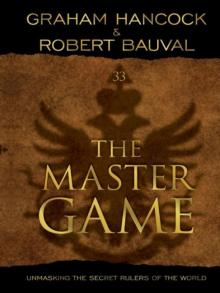 The Master Game: Unmasking the Secret Rulers of the World
The Master Game: Unmasking the Secret Rulers of the World America Before
America Before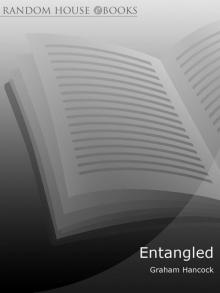 Entangled
Entangled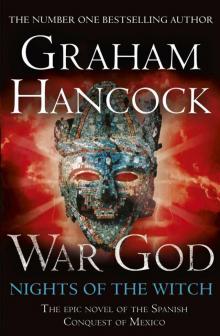 War God: Nights of the Witch
War God: Nights of the Witch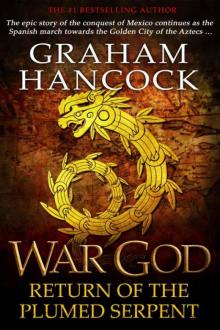 War God: Return of the Plumed Serpent
War God: Return of the Plumed Serpent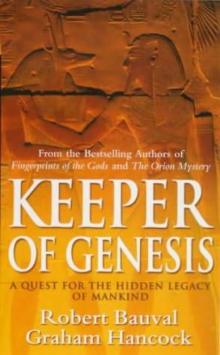 The Message of the Sphinx AKA Keeper of Genesis
The Message of the Sphinx AKA Keeper of Genesis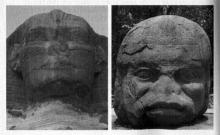 Fingerprints of the Gods
Fingerprints of the Gods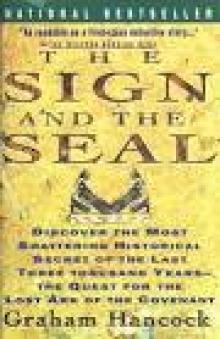 The Sign and the Seal
The Sign and the Seal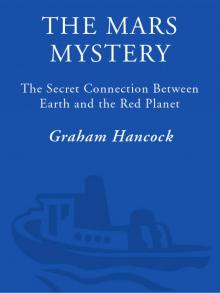 The Mars Mystery: The Secret Connection Between Earth and the Red Planet
The Mars Mystery: The Secret Connection Between Earth and the Red Planet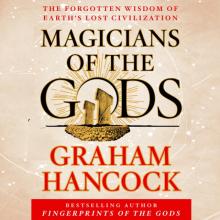 Magicians of the Gods: The Forgotten Wisdom of Earth's Lost Civilization
Magicians of the Gods: The Forgotten Wisdom of Earth's Lost Civilization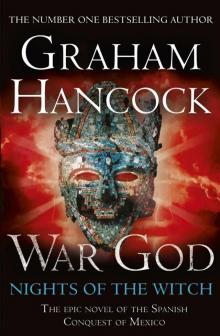 War God
War God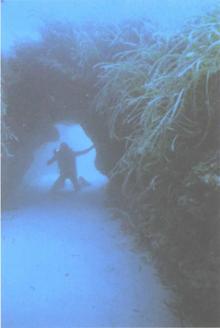 Underworld
Underworld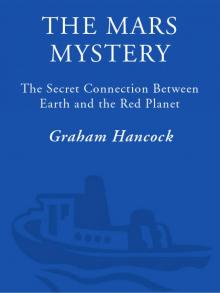 The Mars Mystery
The Mars Mystery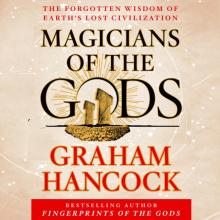 Magicians of the Gods
Magicians of the Gods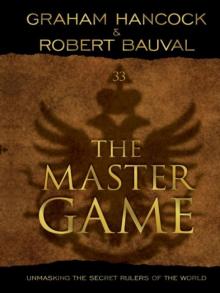 The Master Game
The Master Game